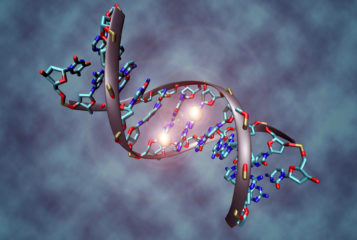Scientists using a new 3D chromosome-mapping technique have uncovered a genetic connection between schizophrenia and early fetal brain development.
They hope to use the insights from the study develop new treatments for schizophrenia, and also plan to use the 3D technique to further understanding of other disorders.
'In the near term we're using the findings from this study to help us understand schizophrenia better, but we're also planning to apply this same strategy to identify key genes in the development of autism and other neurodevelopmental disorders,' said principal investigator on the study, Professor Daniel Geschwind of the University of California, Los Angeles (UCLA).
A previous study had identified 108 mutations, each of which increased the risk of schizophrenia by a small amount (see BioNews 764). But many of these mutations appeared in non-coding regions of DNA, located far from any genes, so it was hard to see how they might have an effect.
As they report in Nature, Geschwind's team used 'chromosome conformation capture' to mark these mutations in the genome and then watched to see where they appeared once the chromosome was coiled up in the nucleus. They found that many of the schizophrenia-associated mutations in the double-helix 'rope' actually came into contact with early brain-development genes when the DNA was folded up in a chromosome. This supports past studies suggesting that genes which increase the risk for schizophrenia are most active during fetal brain development.
The genes newly linked to schizophrenia include several involved in the development of brain-cell receptors for the neurotransmitter acetylcholine. 'There's a lot of clinical and pharmacologic data suggesting that changes in acetylcholine signalling in the brain can worsen schizophrenia symptoms, but until now there's been no genetic evidence that it can help cause the disorder,' said Professor Geschwind.
The study also found a new link to several genes involved in the early burst of brain-cell production in a human fetus that gives rise to the cerebral cortex. Although schizophrenia only appears in adulthood, those with the disease show an abnormal level of activity in their cortex.
Professor Geschwind suggested the new genome-mapping technique could be extended to any disorder that is affected by multiple genes. 'This work provides a road map for understanding how common genetic variation associated with a complex disease affects specific genes and pathways,' he concluded.





Leave a Reply
You must be logged in to post a comment.